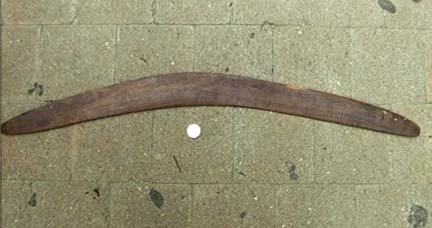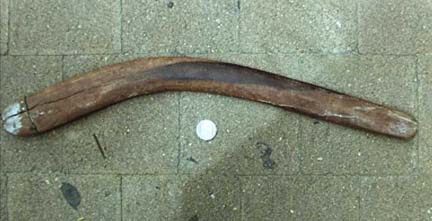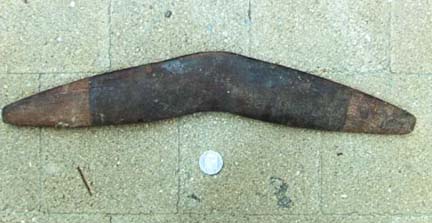malkarr
winchi
in Uw Olkola
in Pakanh
Boomerang, Kowanyama Land and Natural Resources Management Office, March 16 1997 [PH]. The Australian 50 cent coin, roughly 32 mm in diameter, allows for an estimation of size.
Boomerang, Kowanyama Land and Natural Resources Management Office, March 16 1997 [PH]. The Australian 50 cent coin, roughly 32 mm in diameter, allows for an estimation of size.
Boomerang, Kowanyama Land and Natural Resources Management Office, March 16 1997 [PH]. The Australian 50 cent coin, roughly 32 mm in diameter, allows for an estimation of size.
Boomerang, Kowanyama Land and Natural Resources Management Office, March 16 1997 [PH]. The Australian 50 cent coin, roughly 32 mm in diameter, allows for an estimation of size.
Boomerang, Kowanyama Land and Natural Resources Management Office, March 16 1997 [PH]. The Australian 50 cent coin, roughly 32 mm in diameter, allows for an estimation of size.
Boomerang, Kowanyama Land and Natural Resources Management Office, March 16 1997 [PH]. The Australian 50 cent coin, roughly 32 mm in diameter, allows for an estimation of size.





The are different types of boomerangs, depending on whether they are meant for hunting or hand-to-hand fighting and whether they return or not. Boomerangs can also be used as a rhythm instrument by striking two together.
Boomerangs are often named after the type of wood used to make them. For example, a boomerang made from uk alonhdh, the broad-leaved beefwood tree, Grevillea striata, is called egngal alonhdh.